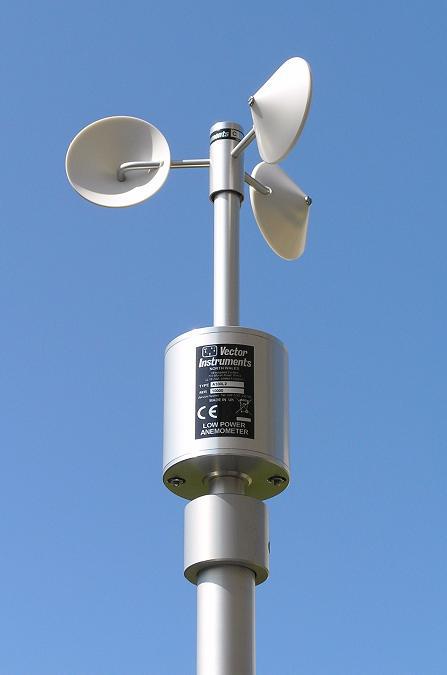Anemometers Introduced: Comprehending Their Importance in Ecological Tracking and Precaution
The duty of anemometers in ecological surveillance and safety and security measures is often ignored, yet their importance is undeniable. These instruments have a long history rooted in scientific questions and technical innovations, evolving to become important tools in numerous areas. From weather forecasting to aviation safety, anemometers play an essential function in offering precise data that educates decision-making procedures and improves overall security. Comprehending the complexities of anemometers unveils a globe of important insights that are fundamental to our understanding of the setting and the actions we take to make sure safety.
History of Anemometers
The evolution of anemometers can be mapped back to the old human beings where simple wind determining tools were initial utilized. One of the earliest well-known anemometers was the hemispherical mug anemometer developed by Leon Battista Alberti in the 15th century.
Over the years, innovations in technology led to the advancement of more modern-day anemometers, including ultrasonic anemometers and laser Doppler anemometers, using boosted precision and efficiency in gauging wind rate and instructions. The background of anemometers showcases an exceptional journey of technology and progression in the area of meteorology.
Kinds Of Anemometers
Throughout the area of meteorology, different kinds of anemometers have actually been developed to precisely measure wind speed and instructions. The most typical type is the mug anemometer, which contains three or 4 mugs installed on straight arms that rotate with the wind. As the mugs rotate, the rate at which they revolve is directly symmetrical to the wind rate. One more widely utilized type is the vane anemometer, which includes a tail or fin that aligns itself with the wind instructions. This placement enables the device to figure out the wind direction. Sonic anemometers utilize ultrasonic signals to gauge wind speed and direction properly. They are typically utilized in study applications due to their high precision. Hot-wire anemometers operate based on the concept that the cooling result of wind on a warmed wire is symmetrical to the wind rate. These anemometers appropriate for determining reduced wind rates with high precision. Each sort of anemometer has its strengths and is selected based upon the certain requirements of the tracking job available.
Applications in Meteorology
Having actually reviewed the numerous sorts of anemometers used in weather forecasting for gauging wind rate and instructions, it is vital to explore their useful applications in the field. Anemometers play a vital duty in weather forecasting by offering real-time and exact information on wind conditions (anemometer). Meteorologists use anemometers to keep track of wind rate and instructions to anticipate climate patterns, concern cautions for severe weather events like twisters, tornados, and storms, and analyze weather for aeronautics safety and security
In weather forecasting, anemometers help in recognizing regional and regional wind patterns, which are essential for forecasting weather condition modifications and establishing weather trends. These this hyperlink tools are additionally utilized in research to examine microclimates, urban warmth islands, and air contamination diffusion. In addition, anemometers are utilized in farming to maximize plant administration techniques, such as watering and chemical application, based upon wind problems.
Relevance in Aeronautics Safety
An integral element of making sure aeronautics safety and security exists in the careful surveillance of wind problems using anemometers. Anemometers play a vital duty in aviation by giving real-time data on wind rate and direction, assisting pilots in making notified choices during liftoff, landing, and flight. Solid and unpredictable winds can substantially influence airplane procedures, making it crucial for aviation authorities to rely upon precise wind measurements to make certain the security of travelers and staff.

In the dynamic setting of air travel, where also small changes in wind rate and instructions can have extensive impacts, anemometers stand as crucial tools for promoting safe and secure and secure flight.
Function in Environmental Study
Exactly how do anemometers add to developments in ecological study? Anemometers play a critical role in environmental study by Web Site giving necessary information on wind rate and direction. This info is vital for recognizing various atmospheric processes, such as air contamination dispersion, weather condition patterns, and climate modification. By properly gauging wind qualities, anemometers help scientists examine the activity of toxins airborne, assess the impact of commercial emissions, and anticipate the spread of pollutants in the setting.


Verdict
To conclude, anemometers have actually played an essential role in environmental monitoring and precaution. With an abundant background and various kinds available, these tools have actually been commonly made use of in weather forecasting, aviation safety and security, and environmental research. Recognizing the importance of anemometers is crucial for accurately measuring wind speed and direction, which is he has a good point crucial for forecasting climate patterns, making sure risk-free air travel operations, and performing ecological studies - anemometer. Their payments to these areas can not be ignored.
One of the earliest known anemometers was the hemispherical cup anemometer designed by Leon Battista Alberti in the 15th century. Over the years, innovations in modern technology led to the development of even more modern-day anemometers, consisting of ultrasonic anemometers and laser Doppler anemometers, offering raised accuracy and efficiency in measuring wind speed and direction. Hot-wire anemometers run based on the principle that the cooling effect of wind on a warmed cord is proportional to the wind speed. Meteorologists utilize anemometers to check wind speed and instructions to anticipate weather patterns, issue warnings for serious weather condition events like cyclones, twisters, and tornados, and assess climatic problems for air travel security.
Recognizing the relevance of anemometers is important for properly measuring wind speed and instructions, which is crucial for anticipating weather condition patterns, guaranteeing safe aviation operations, and performing environmental research studies. (anemometer)